Content
Published:
This is an archived release.
Increase in long-term unemployment
There was an increase of 18 000 long-term unemployed persons from the third quarter of 2015 to the third quarter of 2016. The share of long-term unemployed rose from 28 to 37 per cent. The long-term unemployed are persons who have been unemployed for more than 26 weeks.
| 3rd quarter 2016 | 3rd quarter 2015 - 3rd quarter 2016 | |||
|---|---|---|---|---|
| Absolute numbers | Per cent | Change in absolute numbers | Change in percentage points | |
| Labour force | ||||
| Both sexes | 2 804 000 | 71.2 | 11 000 | -0.4 |
| Males | 1 484 000 | 73.8 | 4 000 | -0.5 |
| Females | 1 319 000 | 68.4 | 6 000 | -0.4 |
| Employed persons | ||||
| Both sexes | 2 666 000 | 67.7 | 0 | -0.7 |
| Males | 1 407 000 | 70.0 | 0 | -0.7 |
| Females | 1 258 000 | 65.3 | 0 | -0.6 |
| Unemployed | ||||
| Both sexes | 138 000 | 4.9 | 11 000 | 0.3 |
| Males | 77 000 | 5.2 | 4 000 | 0.3 |
| Females | 61 000 | 4.6 | 6 000 | 0.4 |
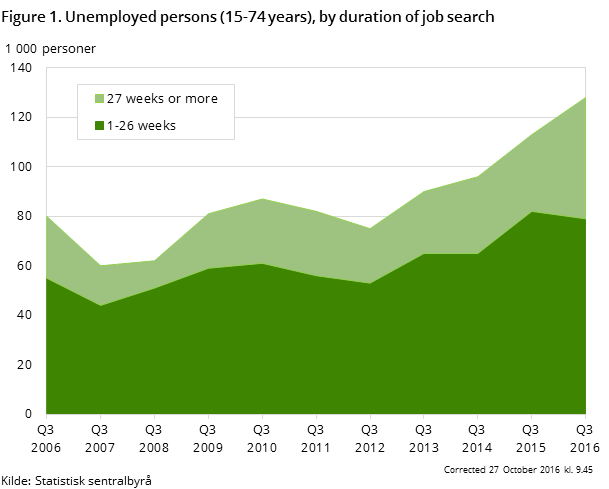
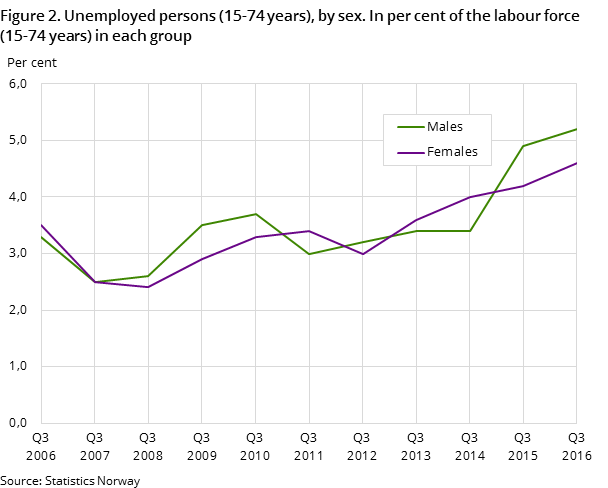
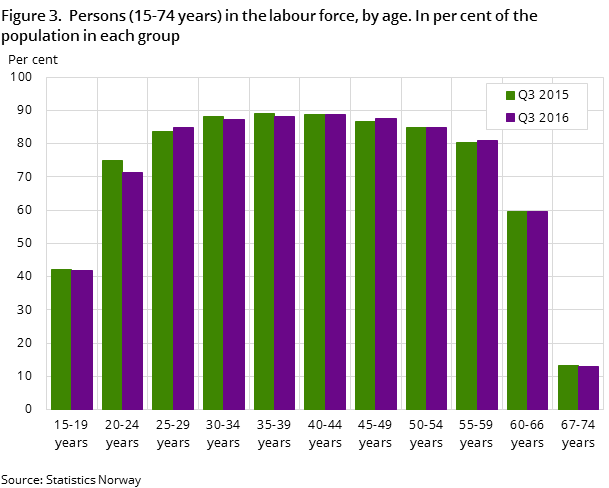
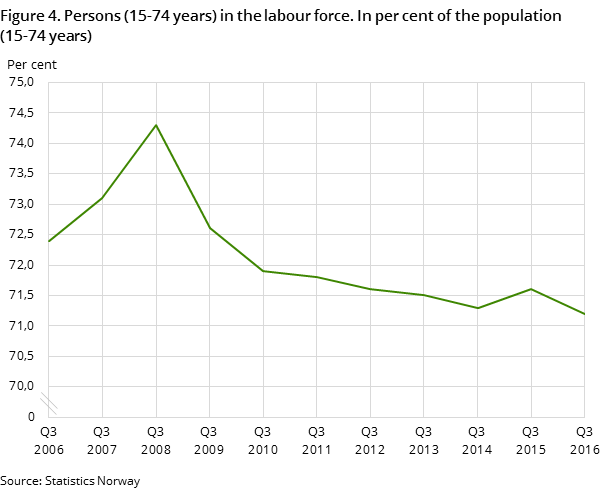
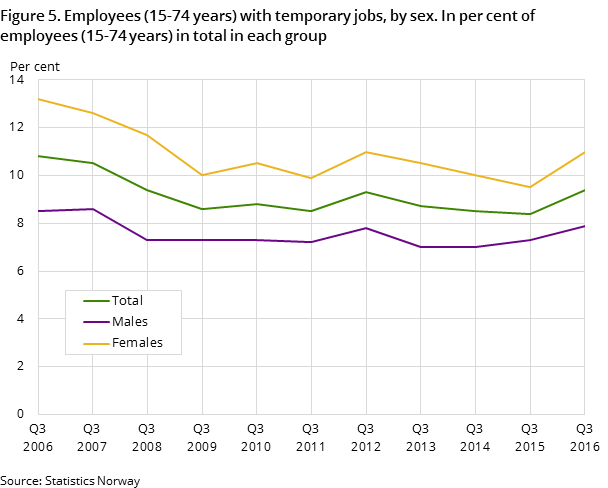
The total number of unemployed rose from 4.6 per cent in the third quarter of 2015 to 4.9 per cent in the third quarter of 2016, i.e. an increase of 11 000 persons, mainly among those aged 25-54. The Labour Force Survey (LFS) shows no increase in the unemployment in the age group 15-24, although the number of employed people among those aged 20-24 decreased by 12 000 from the third quarter of 2015 to the same quarter of 2016, mainly among full-time workers.
As a result of these changes, the labour force participation rate among those aged 20-24 decreased by 3.4 percentage points from the third quarter of 2015 to the third quarter of 2016. During the same period, there has been an increase in the number of people participating in education.
Employment decreased in oil and gas
The LFS shows a continued drop in the number of employed people in mining and quarrying – an industry dominated by oil and gas extraction. From the third quarter of 2015 to the third quarter of 2016 the drop was 12 000, or 18 per cent. Going back to the third quarter of 2014, the number of employed persons in this industry has decreased by 25 000.
More employees with temporary jobs
The number of employees on temporary contracts went up by 25 000 from the third quarter of 2015 to the third quarter of 2016. In health and social work, the number of employees with temporary jobs increased by 10 000. In total, for all industries, temporary employment increased from 8.4 to 9.4 per cent. The percentage of temporary employment was highest, 17 per cent, in personal services and in accommodation and food service activities. In health and social services, as well as in education, the percentage was 12-13 per cent.
Small changes in underemployment
The 73 000 who were underemployed in the third quarter of 2016 represented 11 per cent of all part-time employed, unchanged from the third quarter last year. Two out of three underemployed are women, which must be seen in conjunction with the high proportion of women working part time.
Contact
-
Arbeidsmarked og lønn
E-mail: arbeidsmarked@ssb.no
-
Erik Herstad Horgen
E-mail: erik.horgen@ssb.no
tel.: (+47) 93 08 68 62
-
Håvard Hungnes Lien
E-mail: havard.lien@ssb.no
tel.: (+47) 40 90 26 06
